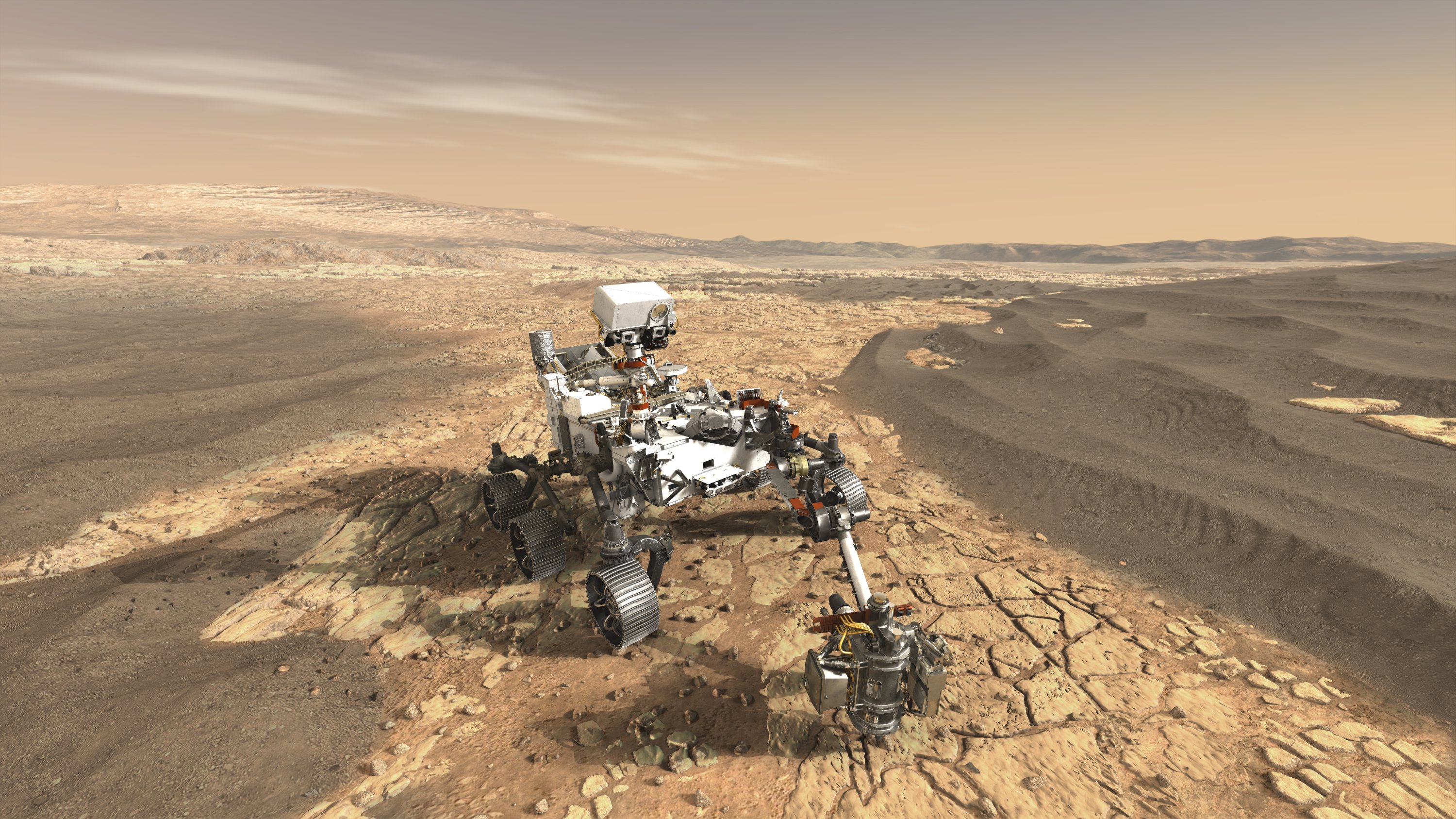Perseverance, a NASA rover, is collecting rocks on the surface of Mars, more than 200 million kilometres away. Though they could eventually become the most valuable rocks on Earth, the rover has limited space for these samples. That’s where “return sample scientists” such as Chris Herd come in, lending their expertise to determine which samples could answer the greatest number of questions about Mars and further our understanding of the planet, including whether it has ever harboured life.
The highest quality samples are sealed and stored airtight on Perseverance, to await study on Earth in the future. A backup of each sample remains in a depot on Mars.
“The rovers have to be cleaned to a certain standard, and the sample tubes we send are probably the cleanest things that humanity has ever sent anywhere,” says Herd, a professor in the Department of Earth & Atmospheric Sciences and curator of the University of Alberta’s Meteorite Collection. This is to ensure that no contaminants or signatures of life from Earth make their way into the Martian samples.
Each tube contains a sample of about 10 grams, and the rover has capacity to fill, seal and store 38 sample tubes; the follow on mission can bring only 30 back. So, return sample scientists need to be selective about what samples they capture. Once the tubes return to Earth, only a certain percentage of each may be used for analysis — the remainder must be curated and archived.
Modern technology and innovative tools mean the limited sample materials available shouldn’t be an issue. “We make the most of the least amount of material. We have an incredible array of instrumentation that allows us to do that,” Herd says. “There are ways we can analyze a sample that give us unprecedented detail about when the rock formed, how it was modified, whether there’s any organic matter that could be evidence of life. There’s a host of things we can tell from tiny amounts.”
Selecting information-rich samples
Return sample scientists take various priorities into account when determining which samples to preserve in the tubes. They also consider the practicalities of what’s available to sample once the rover reaches a particular site. The larger mission is broken down into smaller campaigns, each campaign targeting three to five samples.
Within three weeks of each sampling event, return sample scientists must complete a report that details “everything from the map view to the outcrop to the details of what we’ve learned about the rock as we sample it,” Herd explains.
While researchers on Earth already have samples of at least 175 Martian meteorites, they tend to provide a snapshot of a younger Mars, having been ejected from the planet after violent impacts early in its existence. Consequently they don’t offer a full picture of what has been happening on the planet since.
But Perseverance has already gathered igneous and sedimentary samples from sites in Jezero Crater. Researchers will compare the igneous samples obtained by the rover to some of those existing meteorite samples we already have on Earth, deepening our understanding of Mars. The sedimentary samples will fill a gap in our knowledge about Martian geology, as we currently have no sedimentary rocks from there.
“Those are even more interesting from an ancient biology perspective,” Herd says. “That’s the reason we went to this landing site, because the rocks were laid down by liquid water some three and a half billion years ago and could preserve evidence of ancient life.”
Tools aboard Perseverance record the location of samples, provide insights into what the rocks are made of, and gather information about the environment each one is from, giving researchers invaluable context. Once sampling from Jezero Crater is complete, Herd estimates the team will have about half the available sample capacity remaining, to be used as the rover drives up and out of the crater.
“Each of those 15 or 16 samples could be unique and could represent a bigger range of ages and rock types than we’ve seen inside the crater.”
The return to Earth
It won’t be easy to bring the samples back to Earth. The task needs a lander (a spacecraft that can land on and leave a planetary surface), a rocket, and the ability to rendezvous with an orbiting interplanetary spacecraft. And on Earth, researchers need to be ready to handle the samples.
“There’s a lot that we have to do to make sure we don’t contaminate the samples with signatures of life from Earth and misinterpret that signature as life on Mars,” Herd says. He says it’s hard to imagine retrofitting an existing facility to house and study the samples appropriately and safely. Instead, he says a tailor-made facility could protect the samples from Earthly contaminants, while ensuring that our environment is safe from potentially harmful Martian contaminants. “We need to get this right,” he says, “because this is answering a huge question.”
“There’s still a non-zero probability that there’s extant life that has somehow managed to survive on Mars,” Herd adds. This slim chance is due to the history of Mars, and it “being warmer and wetter in the past and having that potential for microbial life.”
While there are still several years to wait until researchers can get their hands on the samples for analysis, the process is just as satisfying as the eventual payoff may be, according to Herd.
“It’s absolutely phenomenal for me to be involved in such a huge mission, where we get to explore and get information about the rocks and the geology while at the same time sampling and looking forward to bringing those samples back,” Herd says. “That’s what sets this mission apart.”
